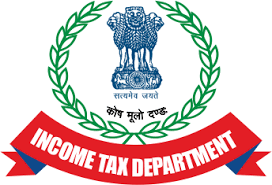For salaried individuals and those not subject to audit, the deadline for submitting income tax returns for the fiscal year 2023-24 (Assessment Year 2024-25) is July 31, 2024. In recent years, the government has undertaken initiatives to streamline the tax filing process, aiming to:
- Pre-filled ITRs: The Income Tax Department populates tax return forms with data from employers, banks, and investment entities, reducing errors and saving time during filing.
- Streamlined ITR forms: Different forms cater to various taxpayer categories. Forms like ITR-1 (Sahaj) and ITR-4 (Sugam) are tailored for individuals with simple income sources, making filing easier.
- Online submission: Taxpayers are encouraged to file returns online, offering convenience and reducing reliance on physical paperwork.
By following straightforward tips, taxpayers can ensure accurate filing, minimizing queries from the income tax department and other related issues.
Selecting the Right ITR Form
Choosing the appropriate ITR form is crucial for accurate tax filing and to avoid delays or penalties. Several factors influence the selection, including income sources, residential status, and other considerations. Commonly used forms include ITR-1 (Sahaj), ITR-2, and ITR-3, each catering to different taxpayer categories.
Choosing the Right Tax Regime
From the fiscal year 2023-24, the default tax regime replaced the streamlined tax system. Taxpayers can opt out of the new system through the ITR form. Tax calculators on the Income Tax Department’s website help assess tax obligations under various regimes, aiding decision-making.
Income Reconciliation Before Filing ITR
Reconciling income sources ensures accuracy and completeness, preventing discrepancies and potential penalties. Steps include collecting documents, comparing income sources, identifying discrepancies, and reporting missing income.
Entering TCS Details
Tax Collected at Source (TCS) is crucial in Indian tax filing. Details can be found in Form 26AS and AIS. Claiming credit for TCS deductions reduces overall tax liability, potentially leading to a refund.
Minimizing Tax Credits
Accurate reporting of tax credits, including TDS and TCS, ensures only the net tax liability is paid. Information can be found in Form 26AS and AIS, with careful reconciliation to avoid discrepancies.
Claiming Past Losses
Utilizing eligible losses reduces tax burden. Current and prior year losses can be claimed, with unutilized losses carried forward. Different types of losses have distinct carry-forward periods.
Declaring Foreign Assets
Disclosure of foreign assets and income is crucial for Indian taxpayers, with a separate schedule in the ITR form for detailing foreign assets. Non-disclosure may lead to fines and legal action.
Submitting Bank Account Details
Accurate bank account details ensure timely tax refunds. Providing account number, IFSC code, and bank name on the ITR form is essential.
Filing Before the Deadline
Timely filing avoids late filing costs, loss of tax benefits, and delayed refunds. It ensures compliance with tax regulations.
Verification of ITR Details
Verification within 30 days of filing is essential to avoid nullification. Options include Aadhaar OTP, net banking, or physical ITR-V submission.
Ensuring all income-related documents are organized and exploring available deductions and exemptions are essential for reducing tax liability. Referring to the Income Tax Department website or seeking advice from tax professionals provides comprehensive information tailored to individual circumstances.

